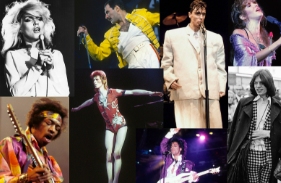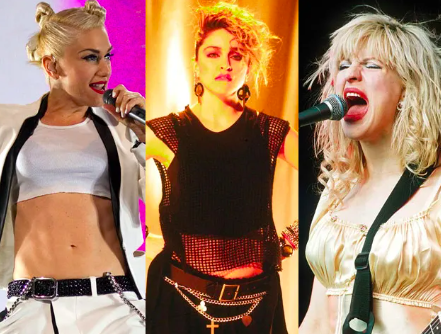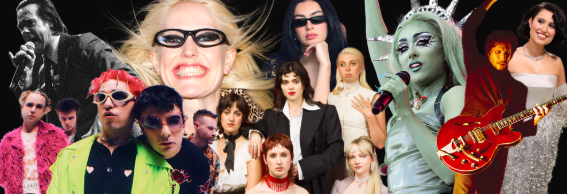
By Helena Dell’Armi
From Fleetwood Mac’s flared sleeves and bell-bottoms to micro rave outfits, the influence of music on fashion has always been present in people’s lives. Music is more than just a sound; it is an identity that fans wear. Many music lovers will follow their favourite artist’s fashion taste. For example, Harry Styles wore a feather boa for the 2021 Grammy Awards, and his fans then started wearing feather boas for his concerts. The relationship between music and fashion has evolved, but the impulse to express musical identity through clothing remains as close as it was in the past decades.
Way before people were dressing up for our current pop music concerts, fans were already getting inspired by their favourite punk bands, such as ‘The Sex Pistols’ or ‘The Clash’, or other artists like David Bowie. The ripped articles of clothing inspired by ‘The Sex Pistols’ represented the rebellion of the 1970s in the United Kingdom, when, coincidentally, the designer Vivienne Westwood started her brand ‘Let it Rock’ in London. The punk bands of the time inspired not only designers but the population, too. People started being more expressive in their personal style, from colourful mohawks to dark leather jackets, fashion was shifting in comparison to the 60s. These styles were used as resistance to the mainstream norms.
David Bowie, Freddie Mercury, and Mick Jagger were iconic symbols for the era of Glam Rock, blurring the line between genders with creative makeup and colourful outfits. The idea of men wearing clothes that were more feminine was seen as a risk-taker at the time by many. This led to fans following in and taking more risks when it came to fashion, even if they were small. Stevie Nicks had her ethereal and mystical style during Fleetwood Mac’s breakout. She was inspired by other musicians, took these inspirations and created her own personal identity that women all over the 70s in America adored and adapted into their own lives.

In the 80s, Madonna was the risk-taker for fashion. She was the one who advocated for self-expression through fashion by wearing a lot of lace, ‘provocative’ necklines for the era and leather jackets, following in the footsteps of punk bands. MTV then referenced musicians as fashion icons in the 80s. Fans used fashion as allegiance, mirroring many artists and their music in their own day-to-day clothing. The adoption of each of these styles at the time showed the influence that music had not only between artists but towards the public, too. This era inspired the feedback loop between music and fashion: artists inspired fans, who influenced designers who then reinterpreted the look for the masses.
The rise of rap from the 90s to the 2000s also heavily influenced the style of people at the time and continues to do so to this day. The baggy jeans, the rise of the low rise, baby tees, bandanas and statement jewellery were all styles that derived from the 90s rap culture. In 1996, Tupac Shakur unexpectedly walked the runway for Versace in the Milan Fashion Week, showing many people how connected music and fashion were.
Nowadays, we have pop music in abundance. These musicians have inspired and inspired people’s fashion sense. Harry Styles is a good example of the continuation of the ‘Glam Rock’ where he embraces gender-fluid fashion and inspires fans to do the same. Billie Eilish’s baggy clothes reflect the 90s rap culture, as well as serving as a statement for body autonomy in which she has stated in the past. Rihanna and Beyoncé merge fashion, music and branding, where style becomes part of their artistic identity.

Not only do these musicians inspire the runways, but also the fans. People who listen to an artist’s music feel connected to them in certain ways that adapting the singer’s style to their own strengthens the bond even more. Musicians are constantly inspiring people with their style that which becomes part of their personal identity, in which they feel free to express themselves through fashion. And because of social media, fans now can replicate a certain artist’s aesthetic through online shopping or thrifting.
From the punk rebellion of the 70s to the pop icons of today, music has always been one of fashion’s loudest echoes. What began as ripped jeans and leather evolved into designer collaborations and self-expression, yet the impulse stays the same: to wear what we believe in. Whether it is Bowie’s glitter or your own playlist-inspired style, clothes move to the rhythm of the sounds that we love.